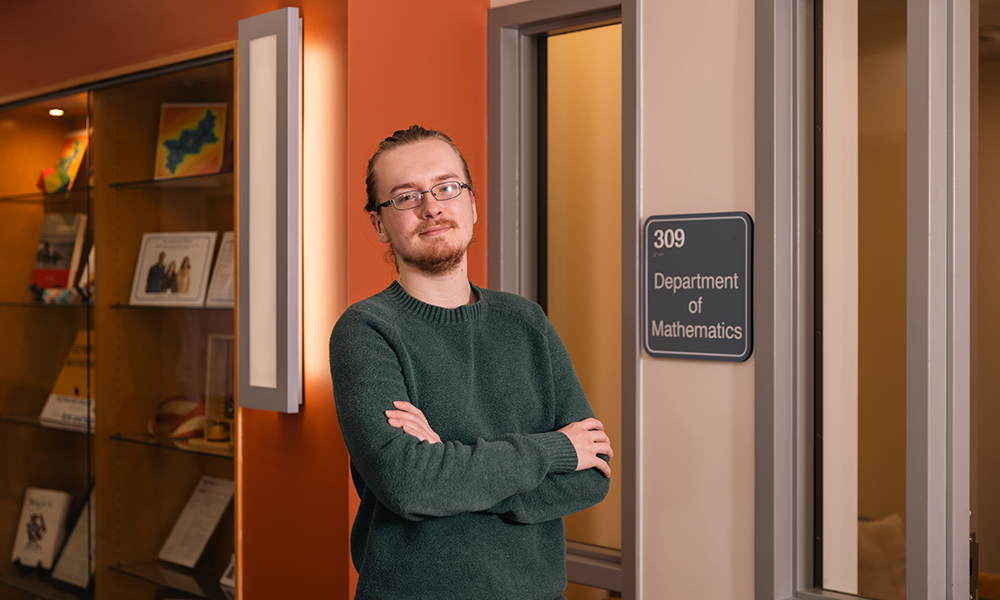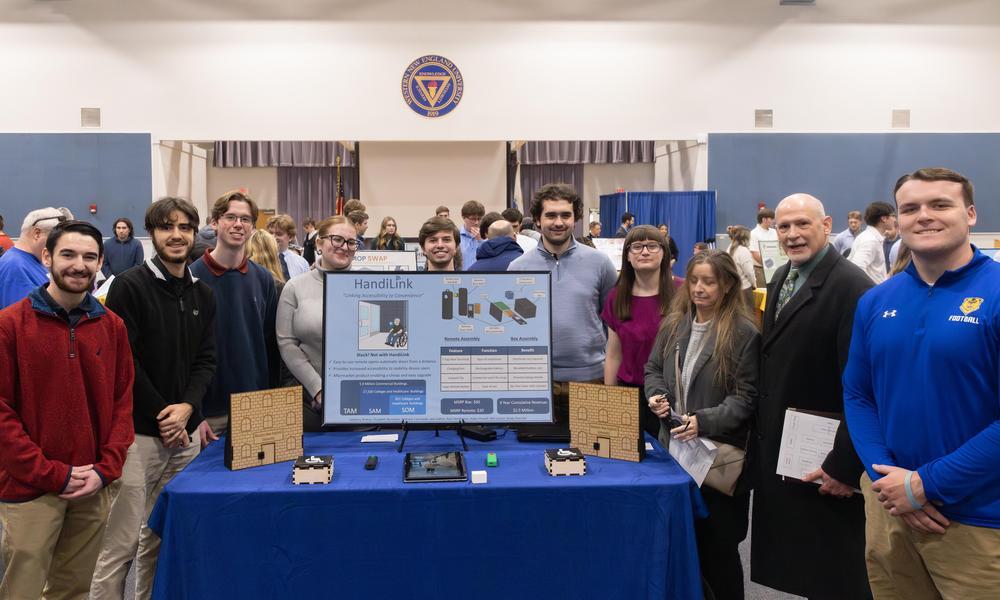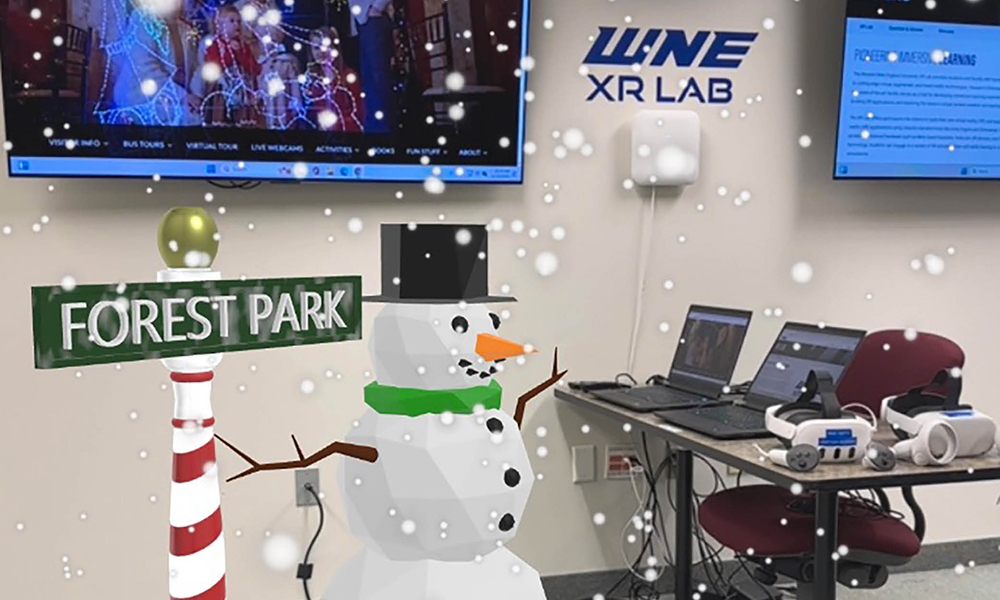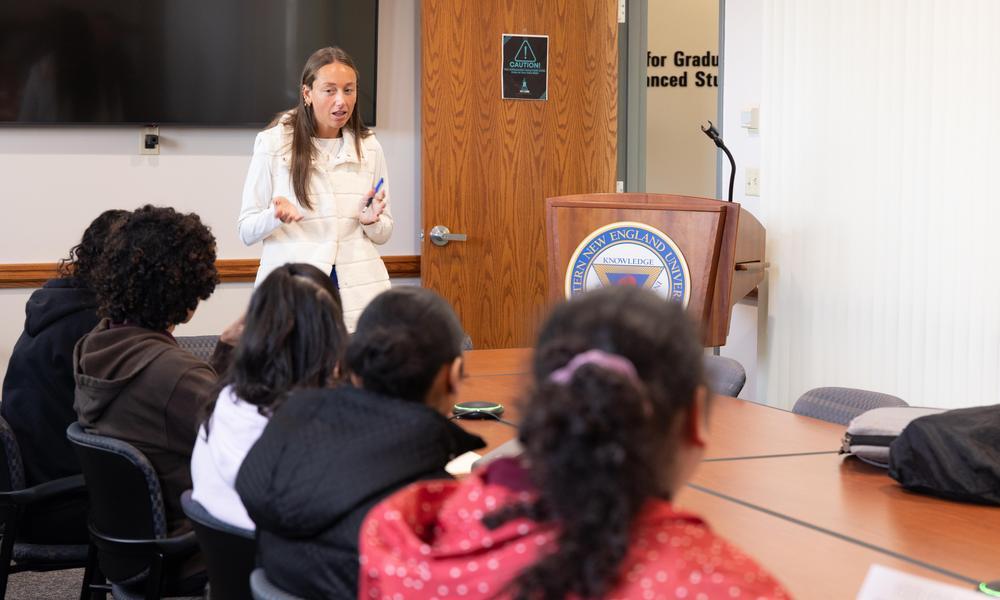Western New England University (WNE) celebrates the publication of two mathematical solutions in the fall 2023 and spring 2024 issues of Pi Mu Epsilon (PME) Society Journal. Senior Daniel Podzunas (Mechanical Engineering, Math) collaborated with Visiting Assistant Professor of Mathematics Cheng-Han Pan, Ph.D., to outline solutions to the challenging mathematical puzzles released with each issue.
The PME Journal is an esteemed publication of Pi Mu Epsilon, a society dedicated to the promotion of mathematical scholarship and advancement among undergraduate students. As members of the problem-solving group that has developed out of an informal affiliation of University Math Center tutors and Math Department faculty members, Podzunas and Pan have sought to pursue solving the PME Journal puzzles.
Podzunas, who added a minor in Math after several professors nudged his interest in the subject, lights up when explaining his fascination with numerical patterns. "There's always something new to find," he said.
The problem-solving tradition began as a fun challenge among students when Podzunas, one of two head tutors at the WNE Math Center, left puzzles of varying difficulty levels on the board each Friday. When Professor Pan arrived in fall 2023, he recognized Podzunas' enthusiasm for puzzles and introduced him to the PME problems.
"He saw that I was into puzzles and then started throwing some at me, explaining mathematics topics that sometimes went over my head, sometimes were really cool, sometimes were a mixture of both," Podzunas says of Pan.
Pan, who previously ran successful problem-solving sessions at Juniata College, approaches these problem-solving sessions as learning opportunities for students, coaching them in developing skills that not only lead to solutions but also illustrate the mathematical process in a professional manner. Pan adds that Podzunas is an "exceptional student with endless curiosity and persistence."
The first of their two published solutions presents a proof to a puzzle dubbed the "cookie" problem. Challenged with dividing a cookie frosted with two colors into three equal parts, each piece containing equal portions of the colors, Podzunas' solution garnered a personal reply from the puzzle author acknowledging the out-of-the-box approach.
"It wasn't incredibly hard for me to find the solution," Podzunas said. "It probably took longer for me to write it in a way that's acceptable for a math journal … you have to prove without even unreasonable doubt."
While the journal may receive any number of correct solutions, the true competition lies in the clarity of the explanation. This is where Pan adds his editorial feedback. "My final goal is to help students produce coherent writing that is accessible to undergraduate students."
Podzunas and Pan are embracing one of the many collaborative academic opportunities available to WNE students and faculty. They've got a third puzzle in the works — this time, with additional student support — and they hope to add a third PME solution acceptance to their record.





